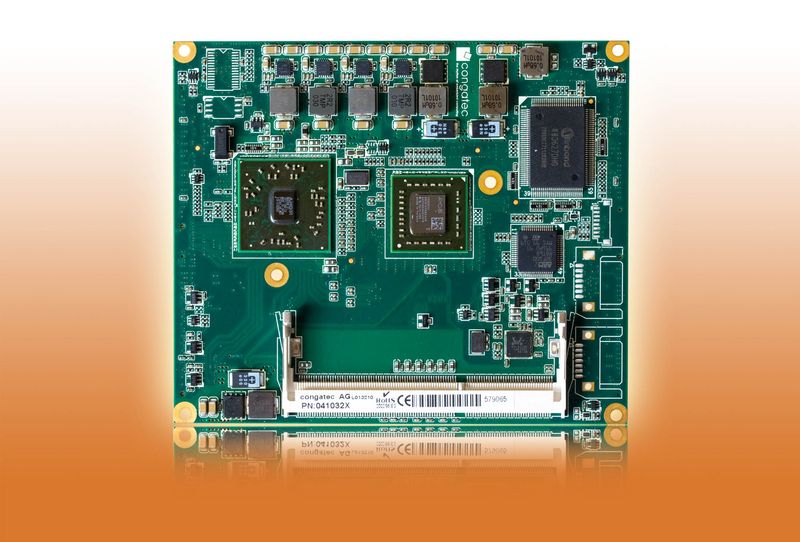Nuremberg, Embedded World, March 2, 2011 * * * congatec AG, a leading manufacturer of embedded computer modules, is giving the ETX and XTX form factors a viable future with the integration of AMD Fusion technology. Modules based on AMD Fusion processors deliver significant improvements with regard to performance and scalability.
Intel’s discontinuation of the 855 chipset family left a major gap in the market particularly for ETX computer modules, which primarily affected the higher performance range of applications. This gap has now been closed by processor manufacturer AMD with the Fusion architecture. Fusion also opens up new perspectives for a wide range of innovative and graphics-oriented applications.congatec has integrated the AMD Fusion architecture into its product range of ETX and XTX COM modules, opening up new scalability options for this form factor to meet even the most demanding tasks. The company supports the Fusion architecture with two new COM modules: conga-EAF and conga-XAF. While conga-EAF is an ETX module, conga-XAF is a XTX module based on the XTX standard. The difference between the XTX and the ETX standard is that XTX no longer supports the ISA bus, but instead a four-lane PCI Express bus. XTX also has more S-ATA and USB interfaces than ETX.
The two modules have many similarities. Both run on processors from AMD's G-series and are equipped with the Embedded Controller Hub Hudson E1, providing a powerful and compact two-chip solution with up to 4 GB of fast and inexpensive single-channel DDR3 memory. congatec currently offers a total of five processors from the AMD embedded G-Series platform, ranging from a single-core 1.2GHz AMD T44R (64KB L1 cache, 512KB x2 L2 cache) with 9 Watt TDP, to a 1.6 GHz dual-core AMD T56N (64KB L1 cache, 512KB x2 L2 cache) with 18 Watt TDP.
The integrated graphics core with the Universal Video Decoder 3.0 for seamless Blu-ray processing via HDCP (1080p), MPEG-2 HD and DivX (MPEG-4) videos supports DirectX® 11 and OpenGL 4.0 for fast 2D and 3D imaging as well as OpenCL 1.1. The APU has two independent graphics controllers providing a VESA-compliant video output with resolutions of up to 2560 x 1600 pixels.
The Fusion architecture itself combines two previously separate computing functions, namely the CPU (Central Processing Unit) and the GPU (Graphics Processing Unit) into an Accelerated Processing Unit (APU). Fusion architecture implements the graphics unit as GPGPU (General Purpose GPU); it contains many configurable parallel processing units that can also be used for tasks that have nothing to do with the graphics. The GPGPU can therefore be used to perform certain compute-intensive tasks in parallel, thereby increasing throughput significantly. Numerical calculations and tasks, which require intensive coding/decoding effort, can be accelerated dramatically in this way. Applications that benefit from this technology, apart from multimedia processing, include encryption/decryption and packet processing in networks. From a programming perspective, these processes are transparent; manual parallelization is not required.
Because of their extreme power efficiency and low power consumption, AMD Fusion processors are ideal for use in fanless and/or battery operated devices.


